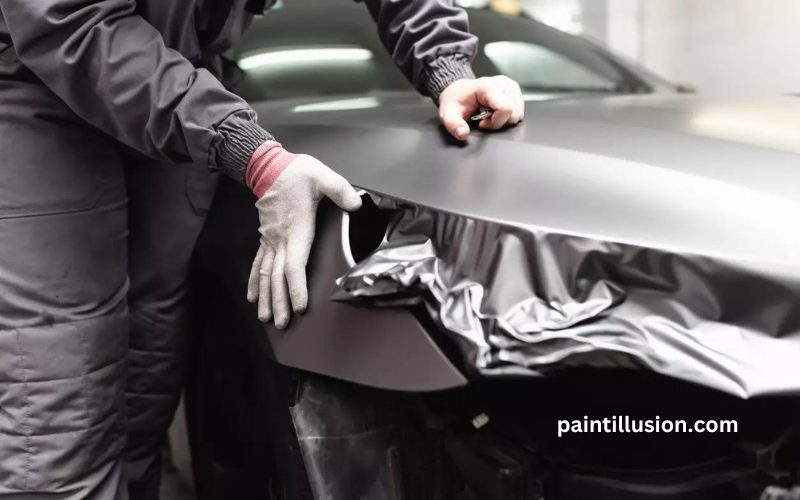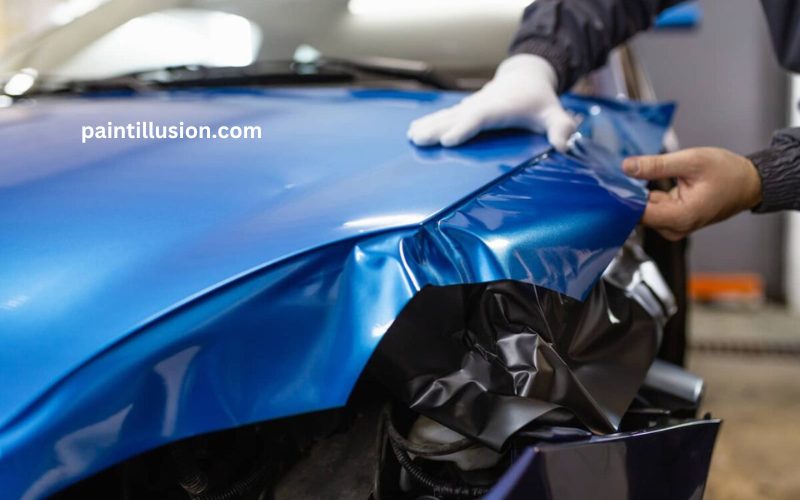When it comes to giving your car a fresh new look, Paint a Car, you have two main options: wrapping or painting. Both methods can transform the appearance of your vehicle, but which one is the more cost-effective choice? In this article, we will explore the factors that determine the cost of car wrapping and painting, weigh the pros and cons of each option, and help you make an informed decision.
Understanding the Cost Factors of Car Wrapping
Car wrapping involves applying a vinyl wrap to the exterior of your vehicle, creating a protective layer and giving it a new color or design. The cost of car wrapping can vary depending on several factors. The size of your vehicle plays a significant role, as larger vehicles require more material and time to wrap. The complexity of the design or pattern you choose can also impact the cost, as intricate designs may require more precise installation.
Additionally, the quality of the vinyl material used can affect the price. Higher-quality vinyl tends to be more expensive but offers better durability and longevity. Lastly, the expertise and reputation of the professional installer can influence the cost, as experienced installers typically charge higher fees for their services. It is essential to consider these factors when estimating the cost of car wrapping.

Pros and Cons of Car Wrapping
Car wrapping offers several advantages over traditional painting. Firstly, it allows you to change the color or design of your vehicle without the need for a permanent commitment. If you decide you want a different look in the future, the vinyl wrap can be easily removed, revealing the original paint underneath. This flexibility is particularly appealing to those who enjoy frequently updating the appearance of their cars.
Furthermore, car wrapping provides an added layer of protection to your vehicle’s paint. The vinyl wrap acts as a shield against UV rays, minor scratches, and other external elements that can damage the paintwork. This can help preserve the resale value of your car and keep it looking newer for longer. However, it is important to note that car wraps are not invincible, and they can still be susceptible to more severe damage.
One potential drawback of car wrapping is the initial cost. While it may be cheaper than a full paint job, high-quality vinyl wraps can still be relatively expensive. Additionally, the installation process requires professional expertise to ensure a flawless finish, which adds to the overall cost. However, when considering the long-term benefits and the ability to change the look of your vehicle easily, car wrapping can be a worthwhile investment.
The Cost of Car Painting: Factors to Consider
Car painting involves applying layers of paint to the vehicle’s surface, giving it a fresh, glossy appearance. The cost of car painting can vary based on several factors. The size of your vehicle is a significant consideration, as larger vehicles require more paint and time to complete the job. The type of paint used can also affect the cost, with premium automotive paints generally being more expensive.
The complexity of the paint job is another factor to consider. If you opt for a simple, single-color paint job, the cost will likely be lower compared to intricate designs or custom paintwork. Additionally, the expertise and reputation of the auto body shop or painter can influence the price. Well-established professionals with a track record of high-quality work tend to charge higher rates for their services.
Pros and Cons of Car Painting
Car painting offers a classic and timeless finish that can enhance the overall look of your vehicle. Unlike car wrapping, paint provides a seamless and permanent color change that can be more visually appealing to some individuals. Additionally, a well-executed paint job can significantly increase the value of your car, making it an attractive option for those looking to sell or trade their vehicles in the future.
However, car painting does have some downsides to consider. Apart from the higher cost compared to car wrapping, the process of painting a car can be time-consuming. It often requires the car to be completely stripped down, the surface to be prepared, and multiple layers of paint to be applied. This can result in extended downtime for your vehicle and inconvenience for daily transportation.
Another consideration is the permanence of car painting. Once you paint your car, it can be challenging to change the color or design without going through the entire repainting process. This lack of flexibility may not suit everyone’s preferences, especially for those who enjoy frequently updating the appearance of their cars. It is crucial to carefully weigh these factors when deciding between car painting and wrapping.
Comparing the Costs: Car Wrapping vs. Car Painting
Now that we have explored the cost factors and pros and cons of both car wrapping and painting, let’s compare the costs directly. In general, car wrapping tends to be more cost-effective than a full paint job. While the initial cost of a high-quality vinyl wrap may be higher than a basic paint job, it offers greater flexibility and protection, which can offset the expense over time.
Moreover, car wrapping can be a more efficient process, requiring less time and labor compared to painting. This can result in lower installation costs. However, it is important to note that the cost difference between wrapping and painting can vary depending on the specific requirements of your vehicle and the quality of materials used.
Factors to Consider When Choosing Between Wrapping and Painting
When deciding between car wrapping and painting, there are several factors you should consider. If you value flexibility and the ability to change your vehicle’s appearance easily, car wrapping may be the better choice for you. Additionally, if your car’s paint is in good condition and you want to protect it from minor damages, a vinyl wrap can provide the necessary protection without the need for a full paint job.
On the other hand, if you prefer a permanent and seamless color change, car painting may be the more suitable option. A well-executed paint job can also increase the value of your vehicle, which can be beneficial if you plan to sell or trade it in the future. Consider your personal preferences, budget, and long-term goals when making this decision.
Car Wrap Maintenance: Cost and Considerations
After investing in a car wrap, it is crucial to understand the maintenance requirements and associated costs. Although car wraps are generally durable and can withstand daily wear and tear, they still require regular care to ensure their longevity. Basic maintenance tasks include regular washing with mild soap and water, avoiding abrasive cleaners or brushes, and keeping the car’s surface free from debris and contaminants.
Additionally, it is recommended to park your wrapped car in a shaded area or use a car cover to protect it from prolonged exposure to the sun’s UV rays. This can help prevent premature fading or deterioration of the vinyl wrap. While these maintenance tasks do incur some costs, they are relatively minor compared to the potential expenses of repainting a car.
Car Paint Maintenance: Cost and Considerations
Maintaining the paint on your car also requires regular care and attention. To keep your car’s paint looking its best, you should wash it regularly with high-quality car wash products. This helps remove dirt, grime, and other contaminants that can damage the paint over time. Applying a protective wax or sealant can also provide an additional layer of defense against UV rays, oxidation, and minor scratches.
In some cases, paint touch-ups or correction may be necessary to address small imperfections or scratches. These services typically involve color-matching the paint and carefully applying it to the affected areas. The cost of these touch-ups can vary depending on the extent of the damage and the expertise of the professional performing the work.
Conclusion
When it comes to choosing between car wrapping and painting, the decision ultimately depends on your preferences, budget, and long-term goals for your vehicle. Car wrapping offers flexibility, protection, and the ability to change the appearance easily. On the other hand, car painting provides a permanent and seamless finish that can enhance your vehicle’s value.
Consider the cost factors, pros and cons, and maintenance requirements of each option before making your decision. Whether you opt for a vinyl wrap or a paint job, investing in your car’s appearance can bring new life to your vehicle and reflect your personal style. Choose wisely and enjoy the transformed look of your car for years to come.

